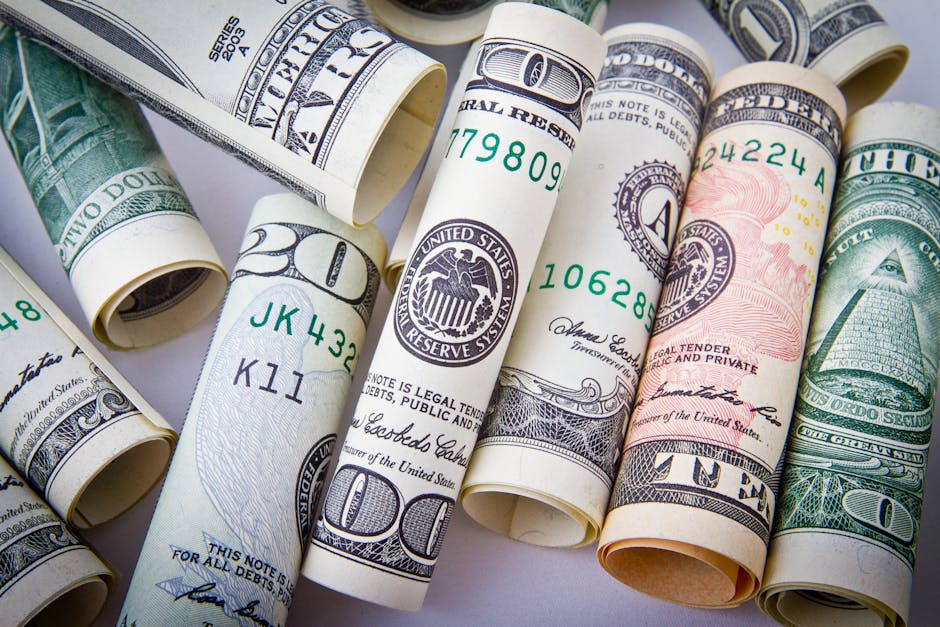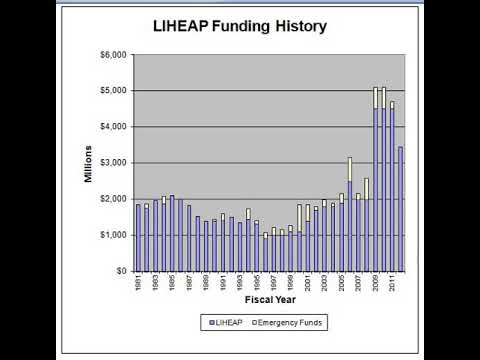The Low Income Home Power Aid Program
( LIHEAP) is an USA government social services program first developed in 1981
and moneyed every year via Legislative appropriations. The goal of LIHEAP is to aid reduced earnings
households, specifically those with the most affordable earnings that pay a high percentage of household
earnings for home power, largely in fulfilling their prompt home energy requirements. The program, part of the USA Department
of Health and Human Provider (HHS), is moneyed by grants appropriated from the federal government.
== Funding circulation ==.
Funding is distributed to each of the fifty states, united state areas and tribal governments.
through the United States Division of Wellness and Person Provider (HHS). Administration of the program is left approximately.
state, territorial or tribal federal governments. Congress likewise provides the Head of state of the.
USA with limited backup funds yearly, which are booked for emergency situation.
situations and launched at the Head of state'' s discretion. State legislatures often supply additional.
appropriations each year to supplement federal LIHEAP funds. LIHEAP supplies single monetary support.
to qualifying low-income families that call for support in paying their home heating or air conditioning.
costs. Candidates have to have a revenue much less than 150%.
of government hardship degree or 60% of state median poverty degree to be qualified, however some.
states have expanded their programs to consist of even more families (for instance, in Massachusetts,.
candidates must be within 60% of the estimated State Mean Revenue). The Reduced Revenue Home Power.
Aid Program (LIHEAP) provides financing support to low-income households, targeting.
those that are genuinely prone: the handicapped, senior, and family members with preschool-age children.Funding is distributed
to states or other. governmental entities, that carry out the program and stems from 4 resources consisting of:. Block gives, the Residential Energy Help Challenge Program, Backup Finances, and. Leveraging Incentive Programs. Appropriations are based upon neighborhood environment, financial,. and demographic solutions. Extra funds might be offered in emergency situation. situations or as match funds when contributions are supplied by regional governments, private. services, or non-profit companies. Last distribution of
funds is conducted through. the program grantees, which have the ability to design their programs to satisfy consumer needs while. Sticking to the objectives and policies of LIHEAP.In most states, the program is run on a.
come-first offered basis. This usually causes
a rush to apply. and get support,
since as soon as the funding swimming pool is vacant most energy help offices.
close their doors. In some states, the legislature or governor. may make a politically popular
gesture of prolonging eligibility to extra individuals.
The Home Energy Support Target( H.E.A.T. )program is the State of Utah ' s program through. This program is especially carried out.
by the state and various Associations of Federal governments( AOG). The Hill land AOG supplies H.E.A.T. assistance to individuals in Utah, Wasatch, and. Summit Counties. Many state LIHEAP companies likewise provide weatherization. support, in which specialists are sent out to homes to make physical adjustments to assist. retain warm or mount more fuel-efficient furnaces. Periodically, acceptance of the weatherization.
process is required with authorization for LIHEAP assistance.Some states have actually tried to enact Percent. of Revenue Payment( PIP) intends within or along with the typical LIHEAP block
give. model. Overall financing has increased considering that. 2002, future financing might be restricted because of the current pattern in cutting the spending plan
based. on building regulations requiring power efficiency, modern devices with low energy usage requirements,. and problems regarding government budget sustainability. As the program progresses, the budget plan being. reduced along with the rise of applicants are
the 2 major obstacles it deals with.== Background==. LIHEAP history started in 1980 when congress created the Low Income Energy Assistance Program.( LIEAP ), as component of the Petroleum Windfall Profits Tax Act to address the worries of. the climbing energy prices of the 1970s. In 1981, LIEAP was changed with LIHEAP as. part of the Omnibus Budget Plan Settlement Act. In 1984, the Person Solutions Reauthorization. Act included a new objective to provide
funds for cooling down expenses of low-income households
. Congress additionally called for making use of even more current. population and energy data, which suggested the changing of funds from exclusively cold-weather. states to warm-weather states. In 1988, there was another major adjustment where. the National Center for Appropriate Innovation( NCAT) started to run the LIHEAP Clearinghouse.== Management==.
LIHEAP is carried out by the Department of Wellness and Person Solutions
. Several federal departments give oversight.
The National Facility for Appropriate Modern Technology. is an extra advisory body in the program prior to funds are offered to grantees. The federal government does not supply LIHEAP. assistance to the public. Instead, the federal government offers funds. to states, state-recognized or federal Indian tribes, tribal organizations, and insular. areas to administer.Groups who obtain
funds are taken into consideration grantees. in the program. LIHEAP beneficiaries have adaptability to style. their programs, within really wide federal guidelines, to fulfill the demands of their people.

Each state might have varying divisions or.
divisions to share funds. Shown over is the program flow from the federal. to regional degree in the State of Utah. In Utah, LIHEAP funding is managed through. the Home Power Assistance Target( WARM) program,
which is handled by the state or Association. of Governments( AOG).
The Mountainland AOG gives straight oversight. for aid to local government agencies in Utah, Wasatch, and Summit Counties. MAG gets virtually$ 2.5 Million annually. State of Illinois has announced in 2014 that. homeowners can apply at two location agencies; a single-person house can certify with. a regular monthly revenue of up to$ 1,459; a two-person house approximately $1,966; a household of three. can earn as much as$ 2,474; and a family of four can make up to $2,981.= =Federal financing== LIHEAP is moneyed by annual appropriations. to the Division of Wellness & Human Being Providers. The funding for the financial year 2017 is $3.09.
= == Financing sources= ==.=== Block gives===. Program( REACH)= == The Residential Energy Help Obstacle.
their home power requirements.” Neighborhood community-based agencies that implement
. ingenious plans “to aid LIHEAP eligible houses lower their power susceptability can get.
these funds. As of 2001, 54 REACH grants had actually been funded. creating an annual spending plan of$ 6 Million, or one fifty percent of a one percent of the total financing. for the LIHEAP program. These gives have actually been utilized to create weatherization. materials, workshops on power performance actions for homes, spending plan counseling, and.
== =Contingency financing= ==.=== Leveraging Motivation Program===. The Leveraging Reward Program is created to compensate those grantees that have actually obtained.
If non-federal bucks are reported, the beneficiary can receive added LIHEAP funds. An instance of this program is to take advantage of. The amount of the discount, provided to LIHEAP.
== How LIHEAP and WAP work with each other==. Low Earnings Home Power Aid Programs( LIHEAP) and Weatherization Help Programs.
This write-up provides of review of each program. LIHEAP and WAP literature is additionally examined.
Finally, an area describing proficiency in low-income. consumers is consisted of.
=== Review===. The mission of the Reduced Earnings Energy Assistance Program( LIEAP )( additionally called Low Earnings. Home Power Assistance Program( LIHEAP) ), developed in 1981, is to assist reduced earnings houses,.
especially those with the least expensive revenues that pay a high proportion of family income. for home power, mainly in satisfying their immediate home energy needs.The program, component of the USA Division. of Wellness and Human Being Provider( DHHS ), is moneyed by gives appropriated from the federal government. LIHEAP pays partial winter months power expenses for. qualified individuals and families. Settlements are usually made straight to local.
utility firms or suppliers. To be qualified, a specific ' s income level. must not be more than 150 %of the federal poverty level. The repayment quantity is figured according to.
the size and kind of your home, as well as kind of fuel. A press release from the Department of Health. and Human Being Services on June 5, 2013, shows that$ 187.4 million was launched to states. to help low-income
property owners and occupants with rising energy costs.This financing supplements$ 3.065 billion in. gives provided previously in the year through The Low-Income Home Energy Support. Program (LIHEAP ). The financing offers to help households pay their. heating and electricity, as well as
make weather-related improvements to their homes. This assists to avoid these family members from.
having solution disruptions. George Shelton, HHS acting aide secretary. for the Administration for Children and Families, mentioned that high temperature levels equate into.
high power bills for families who are already battling to make ends meet.=== Overview of the Weatherization Assistance. Program( WAP )=== The United States Weatherization Aid. Program (WAP )was created in 1976 to help low-income family members lower power intake. and expenses. WAP is regulated by different federal guidelines. made to aid account and handle for the sources given by the Division of Power.( DOE).
WAP financing is acquired from yearly appropriations. WAP technicians execute power audits on a. home to assist situate effectiveness issues. Once an audit is full, the program can
.
replacing burning appliances. Like the LIHEAP, a private
' s income degree. must go to or listed below 150% of the government poverty line to
be eligible for the WAP. Many state WAPs and LIHEAPs collaborate
.
to give the best power services for low-income households.=== WAP===. LIHEAP and WAP are the cornerstones of any type of public power help program. Frequently, both programs not only
collaborate,. they immediately encompass each other.At the Montana energy aid workplaces,.
customers are instantly signed up in the WAP when they are enrolled in the LIHEAP.
LIHEAP and WAP are typically located in the same office. XII )are in fee of LIHEAP and WAP. Each department uses a number of various other programs.
inexpensive weatherization procedures for the home. Weatherization steps may include caulking,. weather-stripping, insulation, air vent dampers, substitute of damaged glass, repair or replacement. of primary doors, and heating system tune-ups.
When a home is scheduled for weatherization. Studies have actually revealed that weatherizing a home. Functioning with each other to supply power.
Future Concerns. Funding Trends Congress appropriated $3.47 Billion
towardTowards The two primary factors why the budget plan has actually been.
are causing federal officials to consider reduction of LIHEAP funds.Changes in future funding will require to think about. the effectiveness of program monitoring, power expenses, the number of receivers, and various other. potential sources useful. Efficiency Actions and Reporting.
ANNUAL MEASURE FY TARGET OUTCOME 1A. RISE'THE RECIPIENCY TARGETING INDEX RATING.
OF LIHEAP HOUSEHOLDS HAVING A MINIMUM OF ONE PARTICIPANT 60 YEARS OR OLDER.( OUTCOME) 2009 96 Aug-10. 2008 96 Aug-9 2007 94 Aug-8.” 2006 92 74 2005 84 79. 2004 82 78 2003 Baseline 79.
LIHEAP effectiveness is monitored regularly through its recipiency targeting index.
This index quantifies the level to which. assistance eligible families are getting LIHEAP assistance.
The best emphasis of qualification is those. households with elderly, handicapped
, or kids. An index score above 100 suggests
that LIHEAP. is offering a target group of houses at a price greater than the occurrence of LIHEAP
. earnings eligible houses that are participants of that group. The table at right shows the target ratings. from Monetary Years( FY) 2004-2009 for homes with a senior participant. The table also reveals what the real national. targeting score was for FY 2004-2006. Each December, state LIHEAP beneficiaries are needed. to report on the LIHEAP Grantee Study the complying with information for the previous government monetary. year: resources of LIHEAP funds. uses LIHEAP funds typical home benefits for support. optimal income cutoffs chosen by States for four-person householdsThe data from the LIHEAP.
Grantee Study are consisted of in the LIHEAP Report to Congress. The most current available information are for FY.
2003 LIHEAP and associated data are acquired from LIHEAP grantee reports and surveys, nationwide.
household studies, and various other federal agencies. Much of the data are released in the department ' s. LIHEAP Home Power
Note Pad and the LIHEAP Report to Congress. Energy Costs. While the program administrators use the above actions and
reports to recognize exactly how the.
program is functioning, there is higher problem that not sufficient funding is being brought right into. the program to stave off boosts in gas prices.The 2008 spike in funding was required to resolve.
the sharp boost in home heating oil. The recent decline in allowances
prior to. 2008 degrees may not be sufficient to take care of the continued climbing of heating costs and its. impact on numerous families with reduced revenues. Recipients. Not just are fuel prices remaining to raise, program recipients are on the rise. This may be illustrated in the complying with graph.
revealing the boost in homes offered by the program in connection with the quantity of. LIHEAP funds allocated'to
the State of Utah.Some statistics of note for the State of Utah. consist of: SEALworks taped that 1,619 houses were. turned off before coming in for HEAT assistance HEAT program aided stop 10,243 households,. that had actually turned off notifications, from being closed off.
The program offered 18,592 families with young youngsters in 2011. The program helped 10,875 senior houses to receive HEAT assistance in 2011. Programs In enhancement to supplying matching funds through.
resources include Rocky Mountain Power ' s Home Electric Lifeline and Lend-a-Hand Programs,.
Questar ' s Energy Support Fund and REACH program,
Catholic Community AreaSolutions American. Red Cross, and Murray City Alleviation Program.
= == Funding sources= ==.=== Block grants===.== =Contingency funding= ==.=== Leveraging Reward Program===.=== WAP===.

